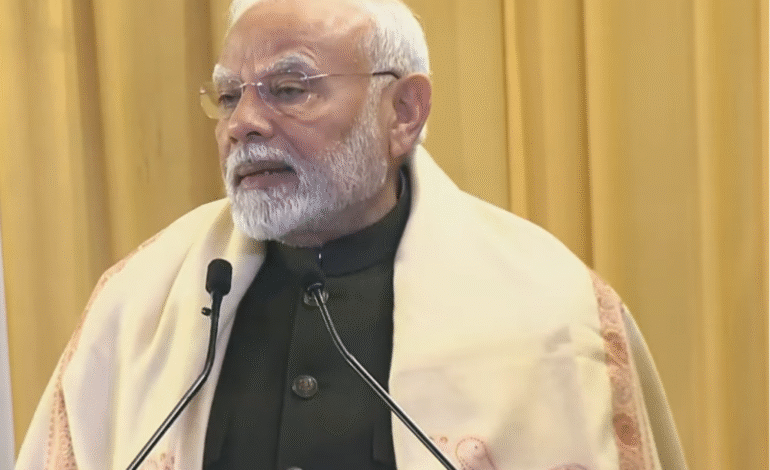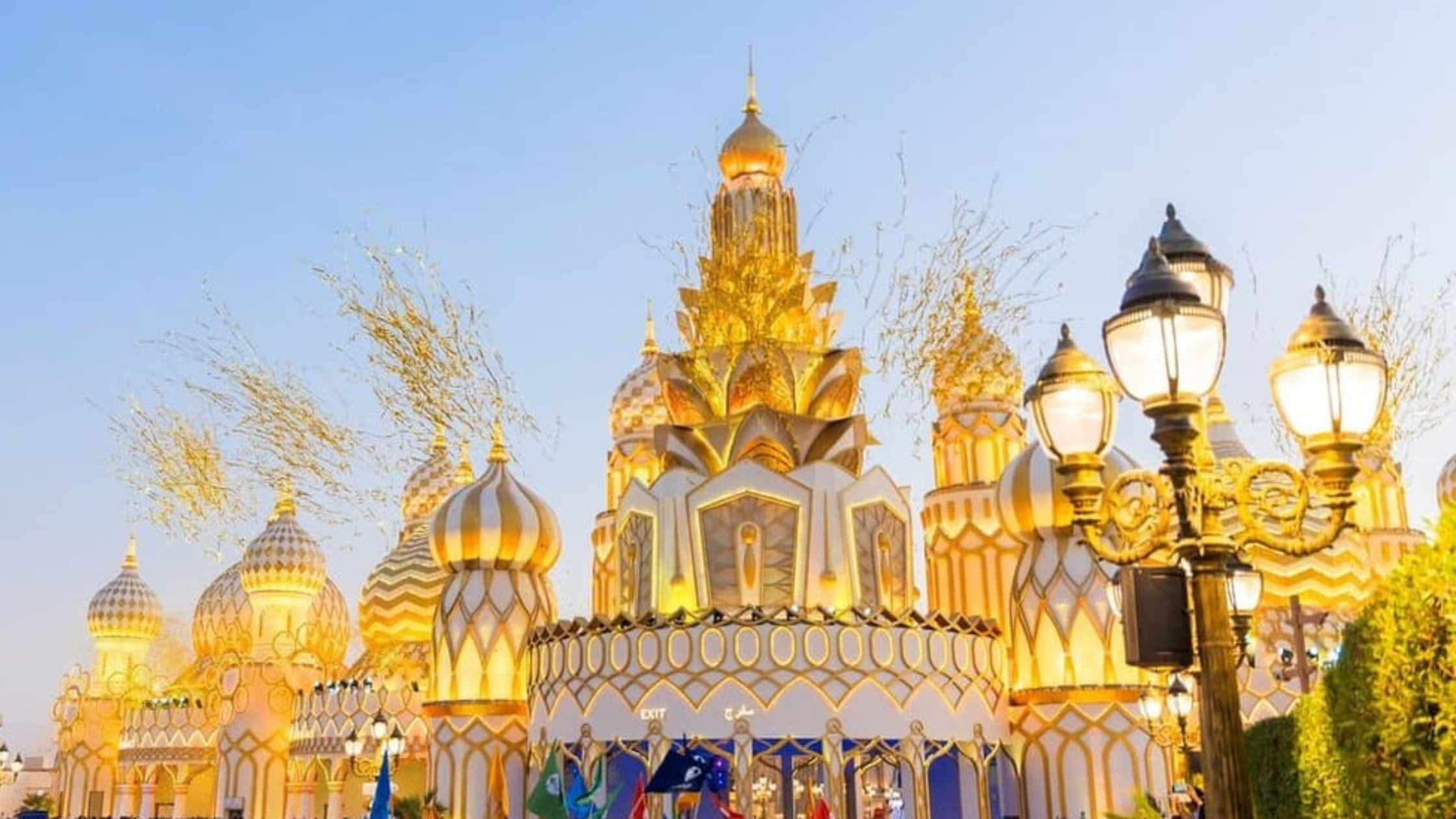PM Modi Calls for United Effort to Build Viksit Bharat

At the 10th Governing Council Meeting of NITI Aayog, Prime Minister Narendra Modi emphasized the importance of unified efforts between the Centre and States. Stressing the concept of “Team India,” he said no goal is impossible if all stakeholders collaborate. This vision is critical in achieving Viksit Bharat—a developed India by the year 2047. The meeting created a vital space for leaders across India to align on a common path for development. By fostering unity, the path toward national progress becomes smoother and more resilient.
Viksit Bharat by 2047: A Unified National Vision
PM Modi stated that the vision of a developed India is not exclusive to the central government; rather, it is a collective ambition shared by all Indians. According to him, each state, city, and village plays a vital role in building this vision. When every corner of the country is developed, only then can Bharat be called truly Viksit. The emphasis was on cooperative federalism, in which all levels of government contribute to a shared national goal.
He proposed a bottom-up strategy, suggesting that India doesn’t need to wait until 2047 to realize this transformation. If every village, town, Nagar Palika, and city begins progressing in earnest, the nation can surpass development milestones much sooner. Progress at the micro level leads to massive shifts at the macro level, which is fundamental to inclusive development.
This focus on grassroots development ensures that progress touches every individual. The goal is not just growth for statistics, but real, visible improvements in people’s daily lives. As he stressed, a shared developmental focus accelerates national progress and reduces disparity among regions.
Policy Implementation Must Reflect in Daily Lives of Citizens
The Prime Minister highlighted that the effectiveness of policies must be felt in the lives of ordinary citizens. When people begin to experience the results of policies—improved healthcare, efficient transport, better employment opportunities—it leads to confidence in governance. That confidence transforms reforms into people-led movements, creating a ripple effect of change.
PM Modi emphasized that a successful policy is one that brings about meaningful change. That change should be visible, relatable, and impactful to every citizen. He urged leaders to focus not only on implementing policies but ensuring those policies translate into enhanced living standards and a stronger sense of national participation.
The meeting focused on how all levels of government can align to meet the aspirations of India’s 140 crore citizens. This alignment is crucial for converting plans into action and intentions into outcomes, ensuring that every citizen is a stakeholder in progress.
Empowering Women Through Workforce Participation and Policy Reform
PM Modi addressed the need for greater inclusion of women in the country’s economic landscape. He said that integrating women into the workforce should be a priority and called for the formulation of respectful and supportive policies to achieve this. A gender-inclusive economy will naturally be a more productive and balanced one.
He emphasized that economic development cannot be complete without empowering women. It’s essential to ensure that laws and initiatives facilitate women’s participation, not just as workers but as entrepreneurs, innovators, and leaders. Their participation brings diverse perspectives and nurtures a more inclusive growth model.
India’s workforce potential can be significantly enhanced by removing the barriers that limit women’s economic engagement. Creating inclusive spaces, providing access to skill training, and ensuring equal opportunities are necessary steps toward this transformation. A Viksit Bharat is only possible when every citizen, regardless of gender, contributes to nation-building.
Creating Future-Ready and Sustainable Cities for Tomorrow’s India
Urbanisation is shaping the future of India. The Prime Minister pointed out that cities are expanding rapidly and must be developed to be sustainable, innovative, and resilient. He encouraged state governments to design “future-ready cities” that incorporate growth, technology, and environmental consciousness.
These urban hubs must be well-planned, inclusive, and responsive to modern challenges like climate change, digital demands, and sustainable transport. Cities must also become centers of innovation and engines of economic growth that serve not just as residential areas, but as catalysts for technological and cultural advancement.
To achieve this, states must adopt smart urban planning that includes infrastructure development, green spaces, waste management, and digital services. The idea is to ensure that cities are livable and environmentally friendly for generations to come. Future-ready cities will also act as magnets for investments, startups, and global partnerships.
Promoting Global-Standard Tourist Destinations to Boost Local Economies
Tourism can play a transformative role in India’s economic growth. PM Modi proposed that every state should develop at least one world-class tourist destination. Doing so would attract global visitors and create local employment and business opportunities. Heritage, culture, and nature can all become cornerstones of this economic strategy.
He suggested that the infrastructure and facilities around these tourist destinations must match global benchmarks. From transport to accommodation and digital connectivity, every aspect must be refined to attract international travelers and offer them an enriching experience.
This move will not only uplift the tourism industry but also promote regional development. Nearby cities and villages would benefit from increased tourism-related business, thus spreading economic growth beyond metropolitan centers. Cultural preservation and economic revitalization can go hand in hand through this initiative.
Viksit Rajya for Viksit Bharat@2047: A Shared and Strategic Mission
The theme of the meeting—Viksit Rajya for Viksit Bharat@2047—focused on encouraging every state to become a building block of the national developmental vision. PM Modi emphasized that only when individual states are developed can India be called developed. Decentralized empowerment remains central to this vision.
He said that states should tailor their developmental strategies according to local needs while aligning with national objectives. This approach allows for diversity in planning while maintaining a united developmental goal, offering flexibility without compromising on unity.
Deliberations included enhancing entrepreneurship, promoting skill development, and ensuring sustainable employment. These themes are essential for strengthening the economy and improving individual livelihoods. A successful Viksit Bharat begins with Viksit Rajyas that are robust, responsive, and resilient.
Entrepreneurship, Skilling, and Employment Generation for a Productive Workforce
One of the focal points of the meeting was fostering entrepreneurship and skilling the youth. PM Modi emphasized the need to build an ecosystem where innovation, startups, and job creation go hand in hand. India’s demographic advantage lies in its youth, and preparing them is pivotal.
States were encouraged to launch programs tailored to their industries and demographic strengths. From tech parks in urban areas to rural skill hubs, the initiatives must focus on inclusivity and accessibility, making sure that opportunities are within reach of all communities.
A skilled workforce is the foundation of a developed economy. By investing in education, vocational training, and mentorship, India can turn its demographic dividend into a global advantage. Empowered youth become not just job seekers but job creators, fueling an innovation-driven economy.
Aligning State-Level Innovations with National Development Goals
PM Modi called on states to take ownership of innovation and policy implementation. He said local governments must identify unique strengths and use them as the basis for developmental models. From agritech to fintech, each state can pioneer a niche that feeds into the national grid.
For example, a coastal state can develop a robust blue economy, while an interior state might focus on agriculture and agro-processing. These state-specific strengths can be transformed into engines of national growth. Regional innovation becomes a scalable model for national replication.
Through this approach, each state contributes to a broader mosaic of progress. The emphasis is on scalable, replicable models that can inspire other regions. Knowledge sharing and inter-state collaboration can further enhance the success rate of such strategies.
Policy, Partnership, and Participation: India’s Triple Pillar of Progress
The PM reiterated the importance of the triple approach—Policy, Partnership, and Participation. While robust policies lay the foundation, partnerships between governments, businesses, and communities bring resources and innovation. Most importantly, people’s participation ensures accountability and longevity.
He called for regular collaboration between states and the Centre to solve shared challenges. From climate resilience to digital governance, joint problem-solving is essential. India’s diversity, when harnessed through cooperation, becomes its biggest asset.
By embracing this three-pronged strategy, India can make long-lasting advancements in social, economic, and environmental domains. The harmony of policy, collaboration, and citizen involvement is the formula for lasting transformation.
A National Movement Driven by Unity and Vision
The 10th NITI Aayog Governing Council meeting symbolized more than administrative cooperation—it reflected a national developmental movement. PM Modi’s vision of Team India encapsulates the idea of united progress where every citizen, village, city, and state contributes.
Through collaborative planning, policy alignment, and inclusive action, the path toward becomes not only achievable but inevitable. The meeting served as a reminder that transformation begins at the grassroots and expands through shared commitment.
Every state that embraces its role as a builder of the national dream brings India closer to its goal. Whether it’s empowering women, building smart cities, or enabling youth through skills and entrepreneurship, the journey to 2047 is one of unity, participation, and purpose.
By working together with a unified vision and unwavering dedication, India can truly become Viksit Bharat before the 100th year of its independence. The promise of tomorrow rests in today’s collective efforts, making the dream of a developed India a shared and realizable reality.








1 Comment
[…] intense conflict that saw exchanges of fire between Iran and Israel and direct intervention from the United States. He pointed to Iran’s attack on what he described as the largest US base in the region, located in […]
Comments are closed.